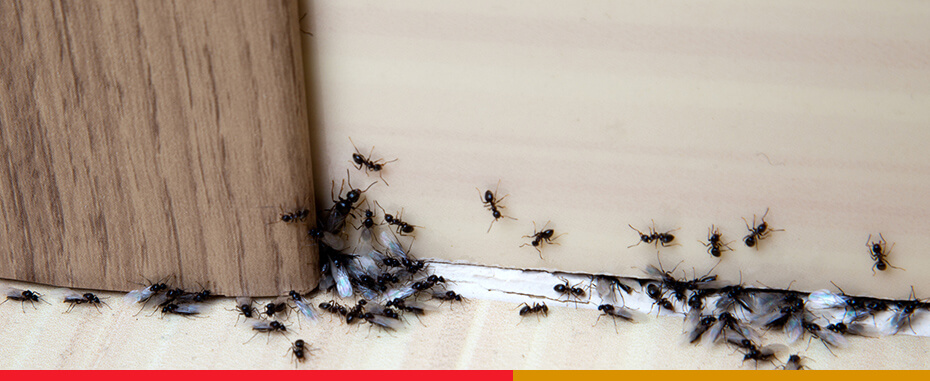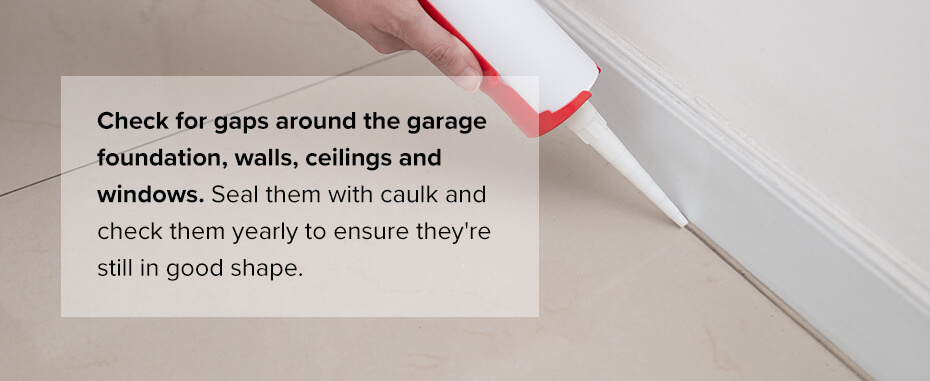
Your garage is a valuable, multifunctional space in your home. It’s where you park your car, keep additional freezers or fridges and store extra belongings. Regardless of how you use your garage, there’s one thing all garages can have in common — offering a protective environment for pests and bugs to thrive. Thankfully, there are several ways you can stop pests and bugs from invading your garage.
Why Are There Bugs in Your Garage?
Everyone has encountered bugs in their garage at one point. Whether it’s a family of mice in a hidden box or flies during summer, you’re bound to encounter pests eventually. Knowing why your garage has pests can help you get rid of them.
You may have bugs in your garage because of one or more of the following reasons:
- Protection from the elements: Garages provide bugs and pests with an environment that protects them from natural predators and severe weather, including heat, cold and rain.
- Mimics their natural environment: Most bugs and pests seek out warm, moist and dark habitats to create their nests. Garages offer precisely that, as they often have less foot traffic than other rooms, are dark and have an abundance of material for bugs to burrow or dig into.
- Filled with smells that attract pests: Your garage may be a source of scents that attract bugs and pests, including food products, spillages, soil, animal food and plants.
Common Garage Bugs and Pests
Now that you know why pests may be drawn to your garage, you need to identify them. Knowing what pests are in your garage will guide your elimination and control methods.
Here are some of the most common pests and bugs you may encounter:
- Rodents: In the summer, mice are in your garage to escape the heat, and in the winter, they look to escape the cold. Rodents are a significant concern, as they can carry many diseases that can spread to humans. Mice can fit through tiny holes and gaps, quickly gaining entry to a garage without adequate sealing.
- Flies: Flies can be found nearly everywhere in a home, including the garage. Flies can be present in garages because of the smells and easy access through the open garage door.
- Silverfish: These insects can enter your home by crawling under doors or on infested items like cardboard boxes. Once in your garage, these pests will eat glue, clothing, paper and food items such as meat and flour. Females can lay a few eggs daily, resulting in rapid population growth. Silverfish may hide their nests in cracks, under objects or in other hard-to-see places.
- Camel crickets: When the weather is too hot and dry for them, crickets seek refuge in protected places such as your garage. As they jump, they can cause damage to fabrics and clothing, even if those items are stored on the highest shelf in your garage.
- Sowbugs: These terrestrial crustaceans seek out moisture to protect themselves from drying out due to water loss. Due to this, sowbugs hide in dark, moist areas during the day to protect themselves from the sun.
- Ground beetles: While they can fly, ground beetles spend most of their time on the ground. The beetles can enter your garage by crawling through unsealed spaces or flying through windows.
- Spiders: Where there are other insects, there are bound to be spiders. If you start to see an increase in spider webs, it may be a sign other insects are making a home for themselves in your garage.
How to Keep Pests and Bugs out of Your Garage
Once you’ve identified which pests you have in your home, it’s time to get rid of them and keep them out. There are a few ways you can do this, and the type of pests you have will determine the methods you use. Here are some tips on keeping bugs out of your garage:
1. Eliminate Existing Pests
The first step in keeping pests out of your garage is removing any existing infestations. Take the time to examine your garage for any signs of rodents or bugs in your garage. Look for scratch marks, holes, bug shells, cobwebs, droppings or damage to your belongings.
Research what type of pest you have and take appropriate measures to eliminate them. This may include setting traps or using pesticides. You can also consult a professional pest control company for guidance or to do it for you.
2. Keep Your Garage Clean and Dry
Any clutter or debris can be the perfect home for pests and bugs. Keep your garage clean by setting up shelves to store boxes or tools. Regularly sweep or mop the floor to remove any spills or residue that can attract bugs, and always keep any food items tightly sealed and covered to avoid tempting pests. Don’t let garbage sit in your garage, either.
Look for any damp areas, and find out what has caused the dampness so you can fix it. Mop up any standing water when it rains and ensure your garage is well-ventilated and encourage healthy air flow to avoid humidity.
3. Seal Cracks

Sealing cracks will give pests fewer ways to get into your garage. Check for gaps around the garage foundation, walls, ceilings and windows. Seal them with caulk and check them yearly to ensure they’re still in good shape.
4. Lay Traps
One way to manage garage pest control is with traps. Set manual traps around your garage, especially near places that are tempting to pests. Use fly strips or sticky strips to catch other insects — lay these around any openings pests may use as an entrance.
You can also spray non-toxic pesticides. Ensure your garage is well-ventilated when you spray the pesticide and reapply it after rain.
5. Protect Food
Food is one of the biggest temptations for pests to enter your garage. If you store food in your garage, make sure it’s secured in airtight containers. Keep everything closed when not in use and clean up any spills as soon as possible. If you store your grill in the garage, clean it thoroughly before packing it away.
6. Maintain Your Garage Door
Your garage door is a powerful tool to stop pests from entering your garage. It needs proper maintenance to ensure it can continue to keep pests out. Check that your garage door closes properly without leaving any gaps. The insulation and weather stripping should be intact, leaving no room for pests to enter. If you have any windows in your garage door, ensure they’re correctly sealed, undamaged and closed.
Keep up with routine garage door maintenance to keep your door functioning correctly. Create a maintenance schedule that includes frequent inspections for cracks and damage, regular cleaning to remove dirt and debris and door opener tests. For more severe garage door issues, contact a professional for repairs.

